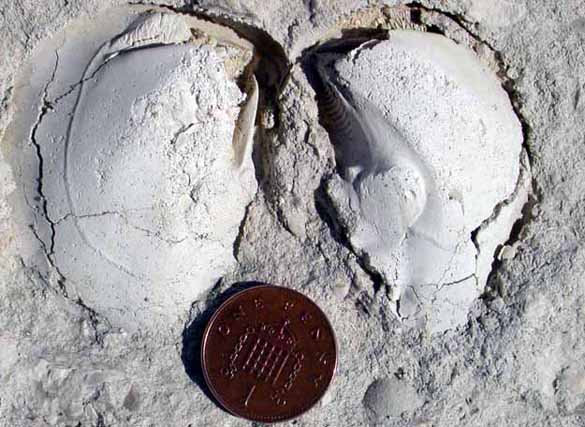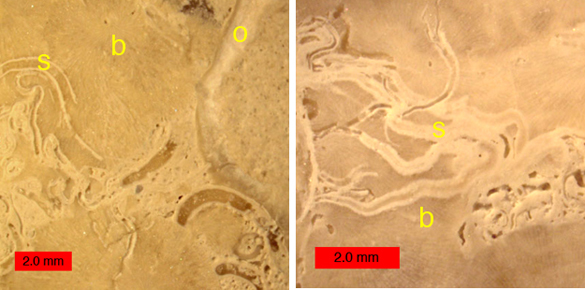 Katherine Nicholson Marenco (’03) and I did delightful fieldwork on the Isle of Portland in Dorset, England, during the summer of 2002. We collected fossils from the famous Portland Limestone (Upper Jurassic) in a series of working quarries. Katherine completed her Independent Study thesis on the topic (“Paleoecology of a cryptic shell-encrusting community: observations from ‘upside-down’ encrusters in internal molds (Upper Jurassic of southern England)”) and the next fall gave her first GSA talk about her findings. Now Katherine is a paleontologist at Bryn Mawr College.
Katherine Nicholson Marenco (’03) and I did delightful fieldwork on the Isle of Portland in Dorset, England, during the summer of 2002. We collected fossils from the famous Portland Limestone (Upper Jurassic) in a series of working quarries. Katherine completed her Independent Study thesis on the topic (“Paleoecology of a cryptic shell-encrusting community: observations from ‘upside-down’ encrusters in internal molds (Upper Jurassic of southern England)”) and the next fall gave her first GSA talk about her findings. Now Katherine is a paleontologist at Bryn Mawr College.
One of the common fossils in the Portland Limestone is the trigonid bivalve Laevitrigonia gibbosa (J. Sowerby, 1819) pictured above. It is usually preserved as an internal mold, meaning that the aragonitic shell dissolved away, leaving the sediment fill. The Dorset quarrymen thought these fossils resembled horses’ heads (in their dialect this comes out as “‘osses ‘eds”) and the name stuck among collectors. If you hold the internal mold upside down, there is a vague resemblance.

Trigonid bivalve in an outcrop of the Portland Limestone. It is "butterflied" meaning that the valves were still attached to each other by the ligament.
Our scientific fascination with this fossil went beyond its preservation and paleobiology (it was a mobile infaunal suspension feeder). After the clam died and the soft parts rotted away, a variety of organisms settled on the inside of its shell. These sclerobionts are preserved upside-down on the internal mold.

Close-ups of the outside of the L. gibbosa internal mold showing "upside-down encrusters": an encrusting oyster Liostrea expansa (o), a colony of the cyclostome bryozoan Hyporosopora portlandica (b), and a serpulid worm (s).
Katherine was able to sort out the identity of these encrusters (not an easy task from the bottom!), their succession and their growth and development. Entire communities lived in these half-closed shells lying on a shallow seafloor 150 million years ago. An ordinary ‘osses ‘ed yields extraordinary paleontological detail.


